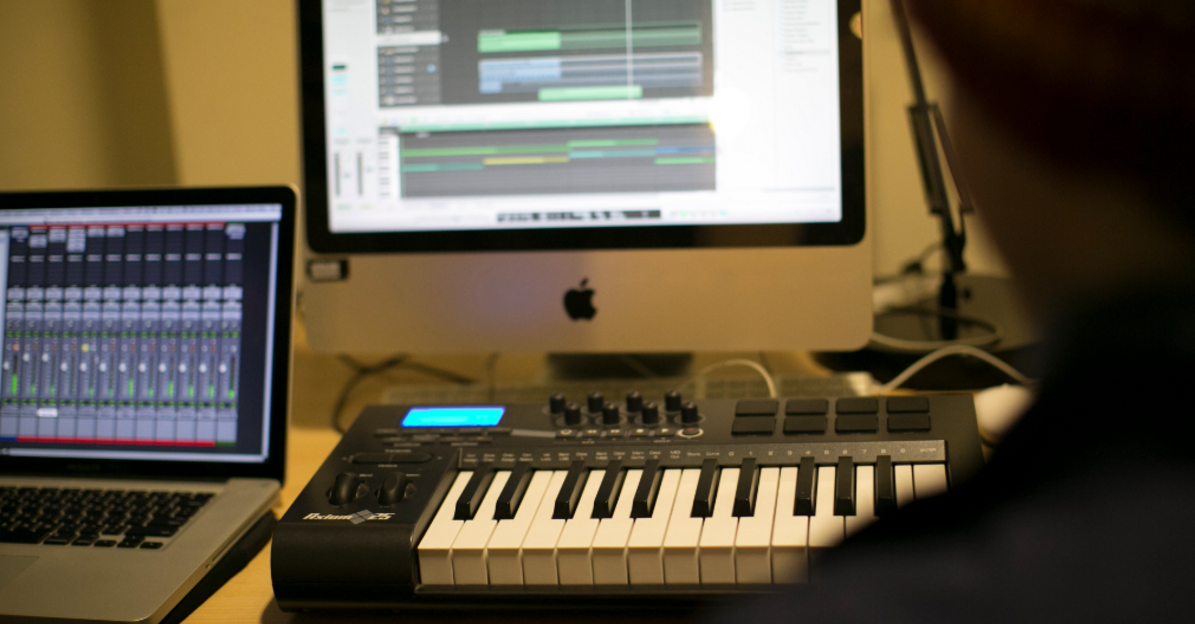
Recording music at home with a band has its own challenges; space is tight, the acoustics in the room may not be great and there may be a lack of sound engineering equipment. When you work in a professional studio, the sound made by each instrument can be isolated and engineered – if you’re recording at home, all sounds will probably be recorded simultaneously.
So what’s the best approach to optimise the sound of the band and to make great music in your improvised home studio? Sound engineering courses cover many of the issues but here’s some suggestions to consider and also remember to check out tools like www.splice.com which can help you add that magic touch to your home recording…
1. Pre-Production Work
The more time you put into planning before the session, the better the outcome. Pre-production is just a case of clear communication; everyone needs to be on-board in terms of understanding exactly what is expected of them for the recording. Then the energy at the recording can be focussed on creativity, not mundane practicalities.
You can use software to create a Musical Instrument Digital Interface (MIDI) mock-up which is basically a run through of the arrangement so that each band member gets a feel for the sound you want to achieve and where he/she is expected to come in. Send this around to the artists to listen to before they arrive – if everyone is clear on when to play and what to play when they get to your home, the recording will probably run quit smoothly.
2. Plan to Overdub if Necessary
If you know there’ll be more instruments needed than you actually have space for, you can use the overdubbing technique to get around the problem. This involves recording one instrument, then layering the next one on top of the first and continuing with the process, instrument by instrument. It helps you to eliminate microphone bleed and it gives you more control when it comes to sound engineering later on.
Make sure you have appropriate audio software for the overdubbing – drums need 8 channels for example so you’d need an audio interface with eight preamps where drums are one of the instruments – Universal Audio Apollo works well for that.
3. Research the Right Equipment
There are two components you need to get right at the outset – the choice of mic and the Digital Audio Workstation (DAW) to be used.
Talk to bands that have recorded at home and pick peoples brains about the best mics for what you are trying to achieve. It’s highly likely that you’ll need a number of different mics; a vocal mic, a drum-kit mic, a diaphragm condenser mic etc. Think of all the instruments you want to record and make sure you have a suitable set of mics to cover the full range of equipment. You might find this microphone guide useful.
The DAW allows you to monitor what has been recorded and it lets band members listen back to the recording. Try to avoid playing back through speakers as you may suffer feedback loops; use headphones for a better experience. A basic DAW may only have two channels so, as we mentioned earlier, make sure the capacity of the DAW matches your requirements.
So in summary – plan to succeed, get everyone on board, make sure you have the right equipment to hand – then have a blast!
Interested in sound engineering courses?
Come to one of our upcoming open days and take time to read through the detail on our sound engineering courses. We’re the only college in Ireland offering certification in Avid Pro Tools, the definitive industry-recognised qualification. Or simply touch base now via email.
[openday]
FOLLOW US